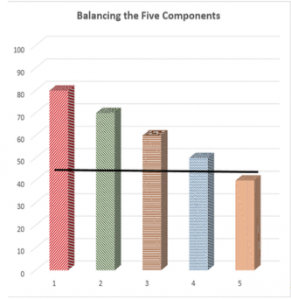
I have found the same leaning tower phenomenon in many other companies. In 1990 we were engaged by Bang & Olufsen of Denmark to examine the reasons for the company’s struggling performance and low profitability in the global marketplace. We found a company with a well-deserved reputation for designing elegant products of superior quality, but one which struggled to turn great products into profits. Here too, the design engineers were regarded as an élite breed of prima donnas living in an inaccessible ivory tower where they dreamed up marvelous new products for customers they never spoke with. At the floundering seventy-year old newspaper, the bias was in favor of editorial. When the vice president of sales sent a report to a senior editor comparing the contents of the company’s newspaper with that of top selling competitors, I was astonished to hear the editor tell him to mind his own business. The job of sales was to sell what the editorial staff produced.
When John Huck joined Merck & Co. in 1959 as director of marketing, he discovered something similar. The medical research team lived in an ivory tower and was inaccessible to other personnel. He insisted on being included in the periodic reviews conducted by the research team and was reluctantly admitted on the condition that he never opened his mouth until asked to speak. He remained silent for six months, until one day the director of research proudly asked for John’s comments on a new research discovery. When he suggested that the company prepare a brochure for the final product they hope to market, the whole research team responded with laughter and ridicule. The research director said it would take another five years or more for the research to reach a stage where they could do that. Huck explained that if they tried now to identify the ideal characteristics they were striving to develop, it might help them produce a better final product. Five years later Merck launched a new antidepressant drug that became the leading product in its field for years to come. Huck went on to become corporate vice president and eventually chairman of Merck Global.
Balance & Integration
 What is true of technology and marketing is true of all five components. Each is essential for success. Each possesses unlimited capacity for further development. But the growth and profitability of a business are not determined by the company’s strongest component. It depends on the relative balance between them. You may have the best product in the world, but without an effective marketing function to reach out to customers or a finely-tuned production system to deliver quality product on time, the best of products can be a dismal failure or a potential that never really takes off, like the original Macintosh computer. The ultimate determinant of a company’s performance is the weakest link in the chain, because that determines the extent to which the more developed components can be effectively utilized. The chart Balancing the Five Components depicts the relative strength of the five components in a typical company. The horizontal line depicts the level of the weakest component. All the regions above the line remain underutilized for want of essential support from the weaker components.
What is true of technology and marketing is true of all five components. Each is essential for success. Each possesses unlimited capacity for further development. But the growth and profitability of a business are not determined by the company’s strongest component. It depends on the relative balance between them. You may have the best product in the world, but without an effective marketing function to reach out to customers or a finely-tuned production system to deliver quality product on time, the best of products can be a dismal failure or a potential that never really takes off, like the original Macintosh computer. The ultimate determinant of a company’s performance is the weakest link in the chain, because that determines the extent to which the more developed components can be effectively utilized. The chart Balancing the Five Components depicts the relative strength of the five components in a typical company. The horizontal line depicts the level of the weakest component. All the regions above the line remain underutilized for want of essential support from the weaker components.

















